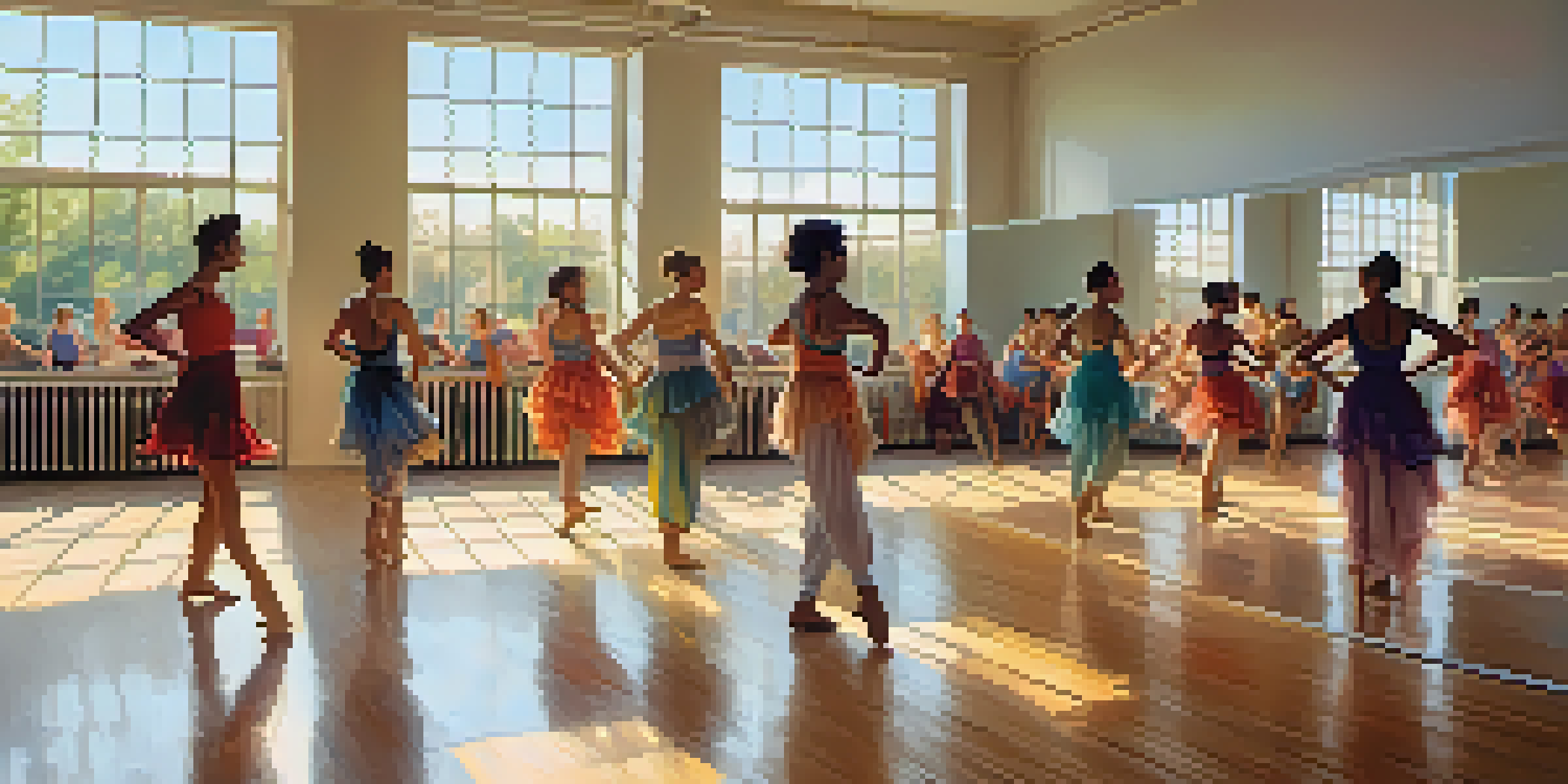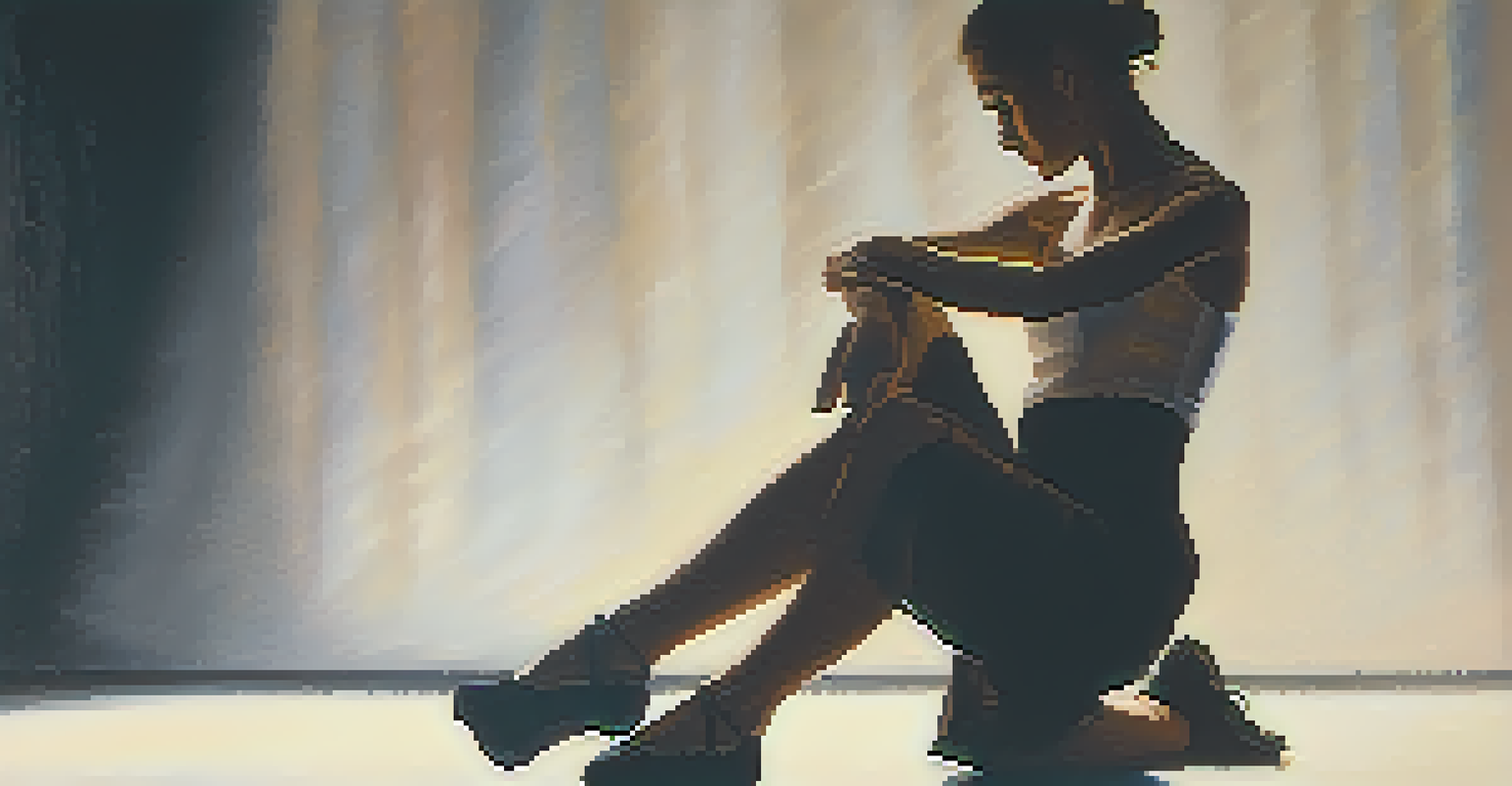Exploring Dance Collaborations: Choreographers and Dancers Unite

The Power of Collaboration in Dance
Collaboration in dance is more than just working together; it's about merging visions. When choreographers and dancers unite, they create a synergy that can lead to breathtaking performances. This partnership allows for a rich exchange of ideas, techniques, and emotions, enhancing the overall artistic expression.
Dance is the hidden language of the soul.
Think of it like a recipe; each ingredient contributes to a dish's flavor. In dance, choreographers provide the framework, while dancers add their unique interpretations. Together, they create a masterpiece that resonates with audiences on multiple levels.
Moreover, these collaborations can promote innovation in choreography and performance styles. As dancers bring their individual backgrounds and experiences to the table, they inspire choreographers to think outside the box and explore new themes and narratives.
Famous Collaborations That Shaped Dance
Throughout history, numerous dance collaborations have left a lasting impact on the art form. For instance, the partnership between Martha Graham and her dancers revolutionized modern dance with its focus on expression and emotion. Their work showcased how collaboration can redefine artistic boundaries.

Similarly, the collaboration between choreographer Alvin Ailey and his dancers introduced audiences to African American culture through dance. Ailey's visionary approach not only celebrated diversity but also set a precedent for future collaborations that prioritize inclusivity.
Collaboration Enhances Dance Artistry
Merging the visions of choreographers and dancers creates a powerful synergy that elevates performances.
These iconic partnerships remind us that when choreographers and dancers come together, they can create work that transcends time and speaks to universal experiences. Their legacies continue to inspire both new and seasoned artists in the dance community.
The Role of Trust in Collaborations
Trust is the foundation of any successful dance collaboration. Choreographers and dancers must feel comfortable expressing their ideas and pushing each other's boundaries. This trust allows for vulnerability, which can lead to more authentic and powerful performances.
Collaboration allows us to know more than we are capable of knowing by ourselves.
Consider a tightrope walker; they need to trust their partner to hold the safety net below. Similarly, in dance, when dancers trust their choreographers and vice versa, they can take creative risks that elevate the performance. This leads to a more dynamic and engaging experience for both the performers and the audience.
Building this trust often requires time and open communication. Regular feedback and discussions can help strengthen relationships, ensuring that every member of the collaboration feels valued and heard.
Creative Processes in Dance Collaborations
The creative process in dance collaborations can vary widely from one partnership to another. Some choreographers may come with a fully-formed vision, while others prefer to explore ideas collectively with their dancers. This flexibility can lead to unexpected and exciting outcomes.
For example, a choreographer might start with a specific theme, but as dancers contribute their interpretations, the piece evolves into something entirely new. This dynamic can transform the initial concept, resulting in a richer, more nuanced performance that reflects the entire team's input.
Trust Is Key to Successful Collaborations
Building trust among collaborators fosters vulnerability and leads to more authentic and dynamic performances.
Ultimately, the creative process is about collaboration and discovery. Each session can feel like an adventure, where every practice brings new surprises and insights, fostering a sense of community among the dancers and choreographers.
Challenges Faced in Dance Collaborations
Despite the beauty of collaboration, it comes with its challenges. Differences in artistic vision, communication styles, and even personality clashes can create tension between choreographers and dancers. Navigating these obstacles requires patience and understanding from both sides.
Imagine trying to build a bridge with someone who has a different blueprint; it can be frustrating if compromises aren't made. Similarly, in dance, choreographers and dancers must find common ground to ensure the collaboration remains productive and harmonious.
Addressing these challenges often involves open dialogue and a willingness to adapt. By acknowledging each other's strengths and weaknesses, collaborators can create a supportive environment that fosters growth and creativity.
The Impact of Technology on Dance Collaborations
In today's digital age, technology plays a significant role in dance collaborations. Tools like video conferencing and social media allow choreographers and dancers from different parts of the world to connect and collaborate effortlessly. This accessibility opens up a world of possibilities for creative partnerships.
For instance, a choreographer can share their vision through video tutorials, enabling dancers to learn and practice remotely. This not only enhances the collaborative process but also allows for a more diverse pool of talent to contribute to a project, enriching the final performance.
Technology Expands Creative Possibilities
Digital tools enable choreographers and dancers from around the world to connect and collaborate, enriching the creative process.
As technology continues to evolve, it will be fascinating to see how dance collaborations adapt to these changes. Whether through virtual rehearsals or innovative performance techniques, technology is reshaping the way we experience and create dance.
The Future of Dance Collaborations
Looking ahead, the future of dance collaborations appears bright and full of potential. As artists continue to push boundaries and explore new forms of expression, we can expect to see even more dynamic partnerships emerge. The blending of different dance styles and cultural influences will undoubtedly create exciting new works.
Moreover, the increasing focus on inclusivity and representation in the dance world will encourage collaborations that reflect a broader range of experiences and perspectives. This evolution will not only enrich the art form but also resonate with diverse audiences.

Ultimately, the future of dance collaborations lies in the willingness of choreographers and dancers to embrace change and innovation. By continuing to work together, they can create performances that inspire, challenge, and connect with people from all walks of life.